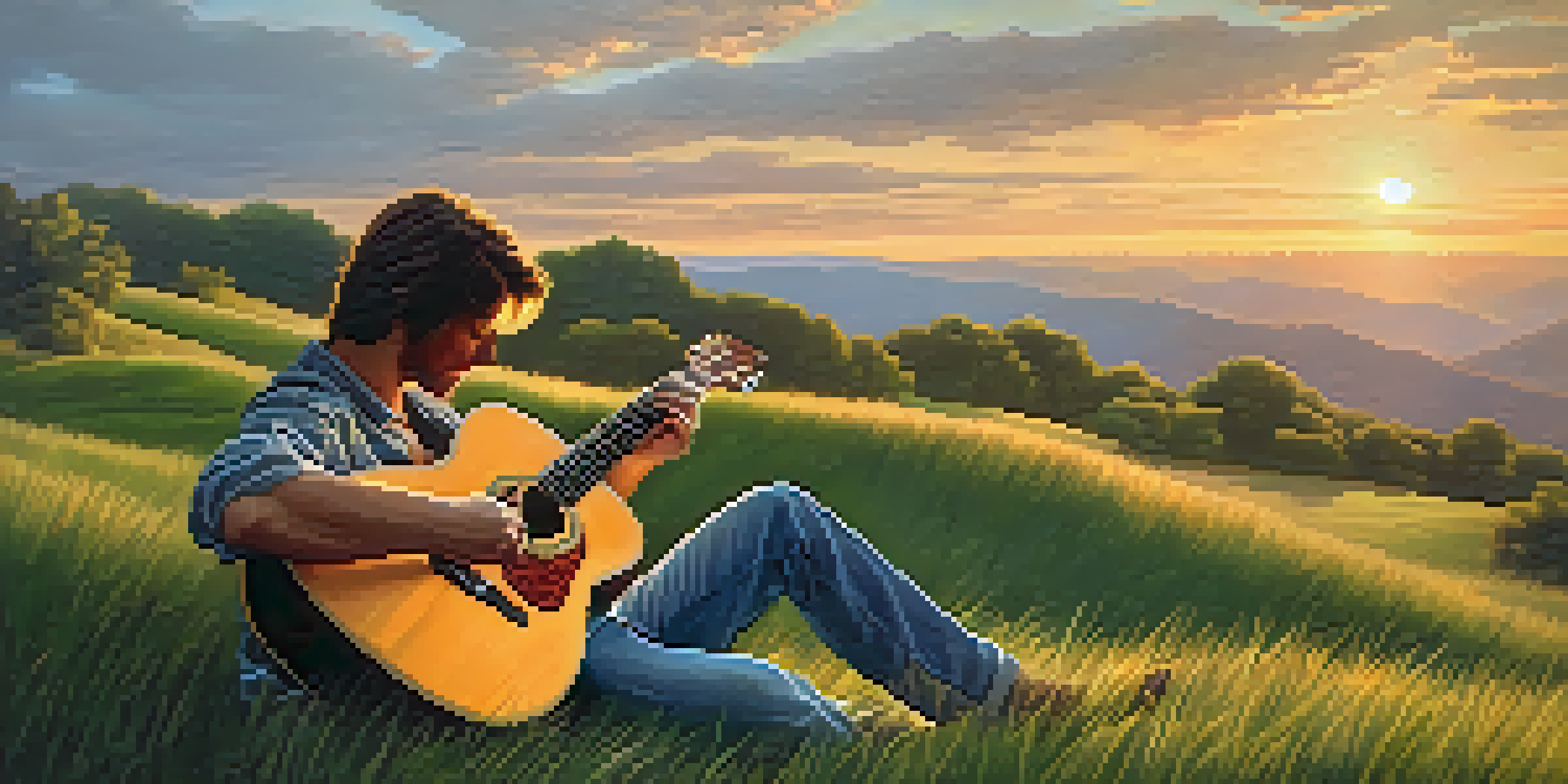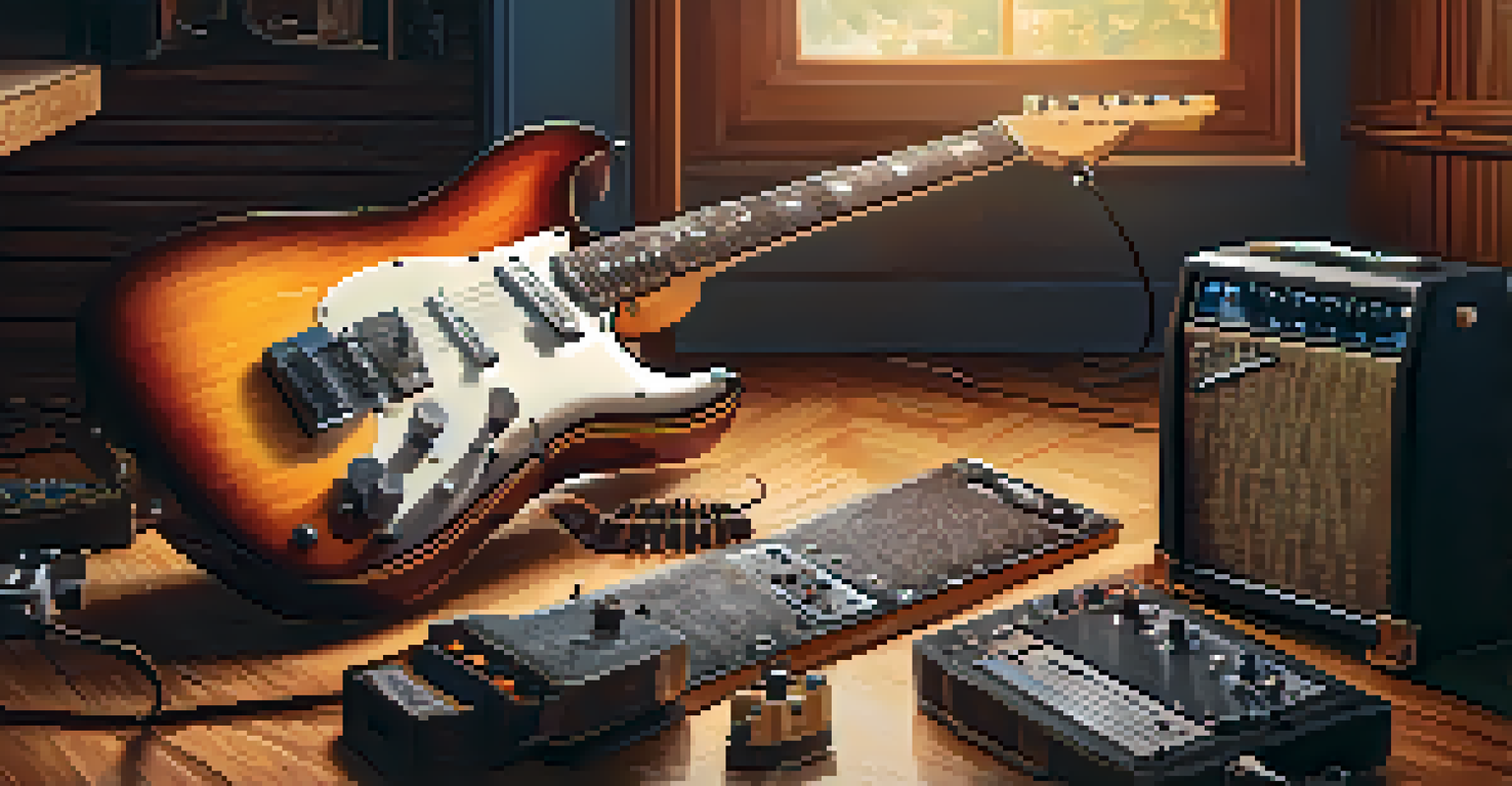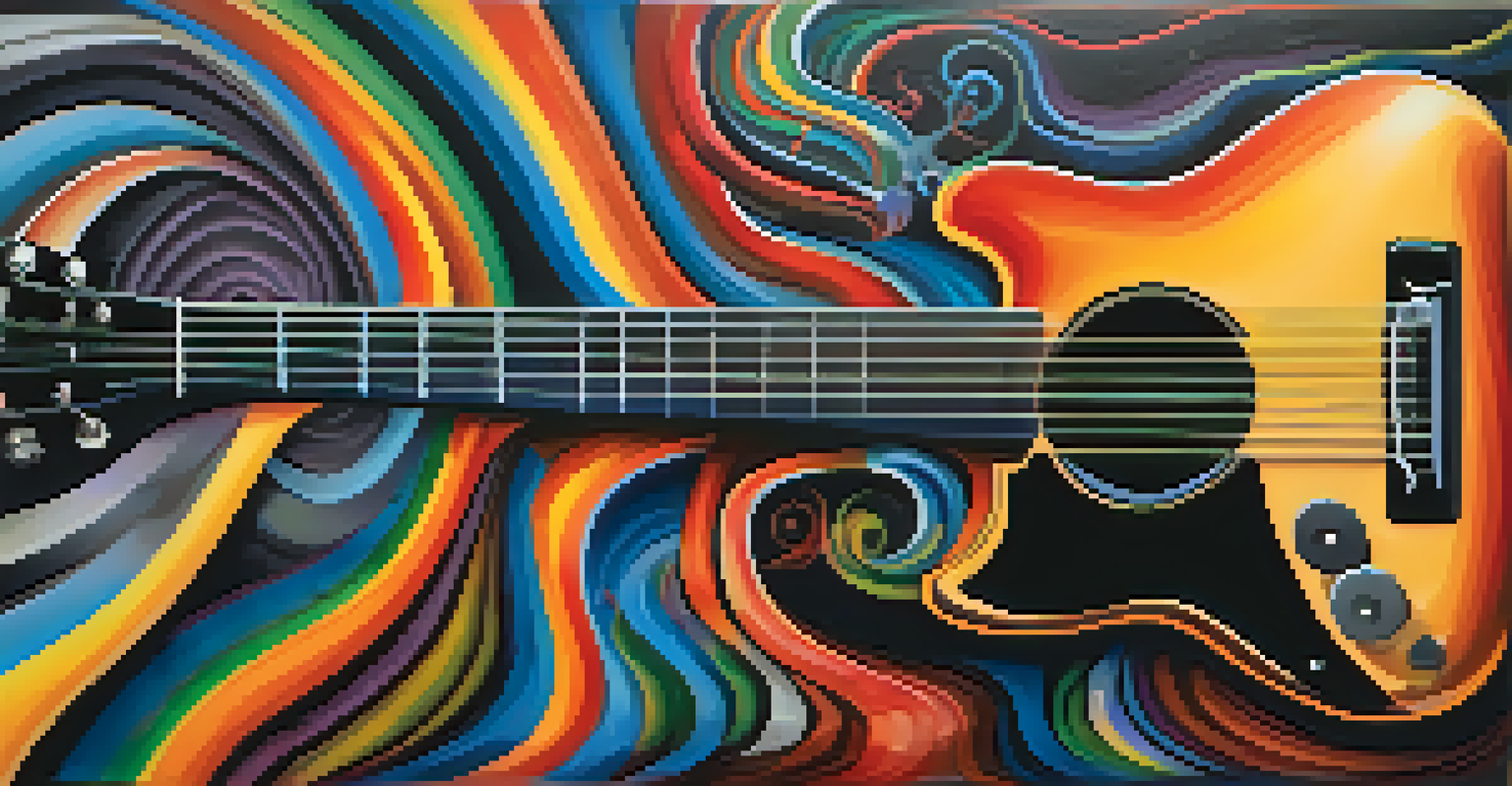Using Guitar Effects to Enhance Artistic Expression in Music

Understanding Guitar Effects: A Creative Tool
Guitar effects are like spices in cooking; they can completely transform a dish. Similarly, these effects can add depth and character to your music, allowing for a wider sonic palette. From distortion to delay, each effect has its own unique flavor that can enhance your artistic expression.
Music is the shorthand of emotion.
Imagine playing a soft, melodic passage that suddenly morphs into a powerful, distorted crescendo. This shift not only captivates the listener but also conveys the emotion behind the music. By utilizing different effects, musicians can explore various dimensions of their creativity.
Ultimately, guitar effects are not just technical gadgets; they're instruments of storytelling. They enable artists to express feelings that words alone might struggle to convey, making them an invaluable part of modern music production.
Exploring Distortion: The Heart of Rock and Roll
Distortion is often synonymous with rock music, embodying raw energy and power. When a guitarist cranks up the gain, the result is a gritty, powerful sound that can evoke intense emotions. This effect can range from a mild overdrive to a full-on fuzz, each serving its own purpose in expressing artistry.

For instance, think about iconic bands like Led Zeppelin or Nirvana. Their use of distortion not only defined their sound but also created an emotional connection with their audience. By integrating distortion into their music, they transformed simple chords into anthems of rebellion and freedom.
Guitar Effects Enhance Musical Depth
Guitar effects serve as creative tools that transform sound, allowing musicians to express emotions and craft unique musical stories.
By experimenting with various distortion pedals, artists can find their unique voice. The combination of different settings and techniques can lead to a signature sound that resonates with listeners, making distortion a cornerstone of artistic expression.
Delay Effects: Creating Depth and Atmosphere
Delay is like an echo in a canyon; it adds layers and depth to your sound. By repeating notes or phrases, delay effects can create a sense of space and atmosphere that immerses the listener in the music. This can be particularly effective in genres like ambient or progressive rock.
The guitar is a small orchestra. It is polyphonic. Every guitar is a living instrument.
Consider the haunting soundscapes created by artists such as U2 or Pink Floyd. Their use of delay not only enhanced their melodies but also transported listeners to another realm. This effect allows musicians to paint a more vivid picture, elevating their artistic expression.
By adjusting the timing and feedback levels on a delay pedal, artists can customize the effect to match their vision. Whether it’s a quick slapback or a long, drawn-out echo, delay can be a powerful tool in shaping the emotional landscape of a song.
Reverb: Adding Space and Ambiance to Your Sound
Reverb is essential for creating a sense of space in music. It's like the sound of a voice in a large hall; it adds warmth and richness to the tone. By simulating different environments, reverb can make a guitar sound as if it’s being played in a small room or an expansive cathedral.
Artists like Jeff Beck often use reverb to envelop their solos in a lush ambiance. This creates a more immersive experience, allowing listeners to feel as if they are part of the performance. The right amount of reverb can elevate a simple riff into a lush soundscape.
Distortion Defines Rock Sound
Distortion is a cornerstone of rock music, providing the raw energy that connects artists with their audience through powerful sound.
Experimenting with various reverb settings can lead to discovering new textures in your music. Whether you're aiming for a vintage vibe or a modern sound, reverb can help you achieve the desired atmosphere and enhance your artistic expression.
Chorus Effects: Adding Richness and Movement
Chorus effects can be likened to a choir, where multiple voices harmonize to create a fuller sound. This effect duplicates the original signal, slightly detuning it to produce that lush, shimmering quality. It’s perfect for making your guitar sound more vibrant and alive.
Many artists, like The Police, have famously used chorus to add dimension to their guitar work. This effect can transform a straightforward riff into something that feels expansive and dynamic, engaging the listener in a more profound way.
By adjusting the depth and rate of the chorus effect, musicians can tailor the sound to fit their artistic vision. Whether it’s subtle or pronounced, chorus can add a touch of magic, enhancing both the melody and the emotional impact of a piece.
Flanger and Phaser: Unique Sounds for Creative Expression
Flangers and phasers are two effects that create unique, swirling sounds, reminiscent of a jet plane or a psychedelic experience. These effects modulate the signal, producing a whooshing sound that can really capture attention. They are particularly popular in genres like funk and progressive rock.
Artists such as Jimi Hendrix and Eddie Van Halen have famously used flangers and phasers to create signature sounds that defined their music. By incorporating these effects, they brought an innovative edge to their guitar work, setting trends that still inspire musicians today.
Combining Effects Creates Unique Identity
By layering different effects, musicians can develop a distinctive sonic identity that captivates listeners and enhances their artistic expression.
Exploring flangers and phasers can lead to exciting sonic discoveries. By playing around with the settings, musicians can achieve everything from subtle shifts to dramatic transformations, allowing for greater artistic expression.
Combining Effects: Crafting Your Unique Sound
Combining multiple effects is where the real magic happens. Just as a painter layers colors to create depth, musicians can blend various guitar effects to craft a unique sound. This layering can result in rich textures that can captivate and engage listeners.
Think of the soundscapes created by artists like Radiohead, who expertly combine reverb, delay, and modulation effects to create their distinctive sonic identity. Each effect interacts with the others, resulting in a sound that is both complex and evocative.

By experimenting with different combinations, artists can discover their voice and refine their artistic expression. The journey of finding the right mix of effects can be as rewarding as the final product, encouraging creativity and exploration.
The Emotional Connection: Effects as Storytellers
Guitar effects do more than enhance sound; they tell stories. Each effect can evoke different emotions, helping to convey the message behind the music. Whether it's the aggressive bite of distortion or the ethereal quality of reverb, effects can deepen the listener's connection to a song.
Artists like David Gilmour have masterfully used effects to create emotional peaks and valleys in their music. The choice of effect can change the mood of a piece, guiding the audience through an emotional journey.
Ultimately, the right use of guitar effects can make a song resonate on a deeper level. By understanding and harnessing these tools, musicians can enhance their artistic expression and create a lasting impact on their listeners.